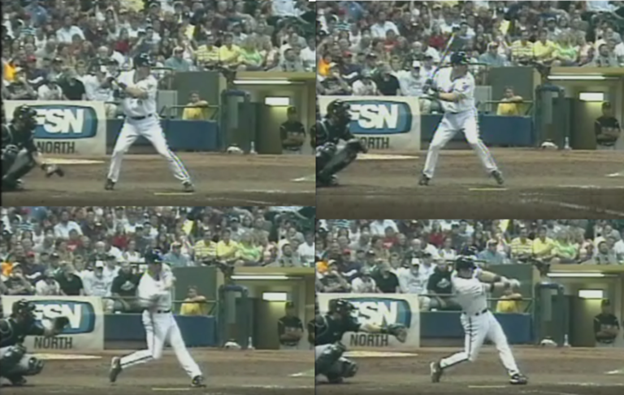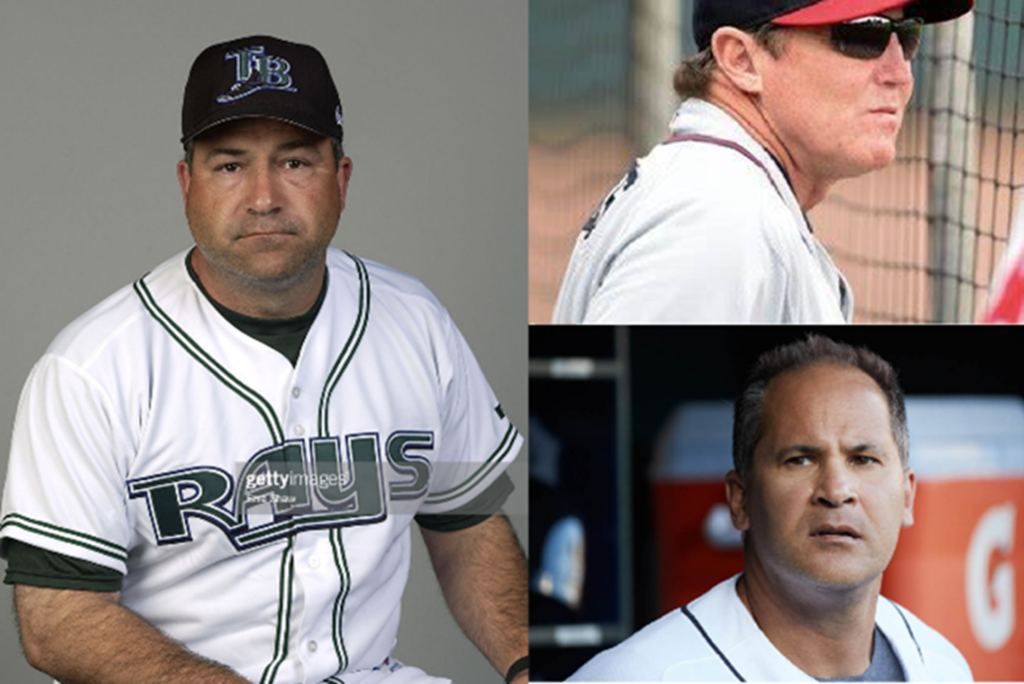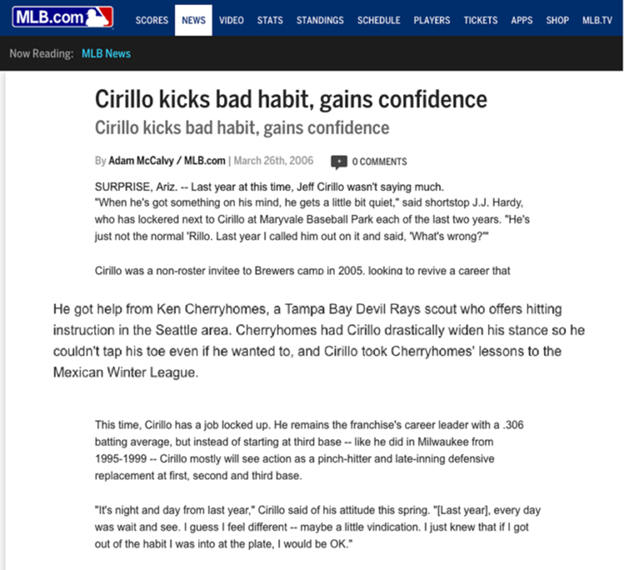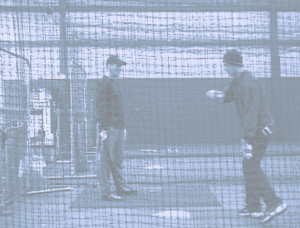
Revisiting Jeff Cirillo's Hitting Mechanics: A Journey from Slump to Resurgence
By Ken Cherryhomes ©2024
In the fall of 2004, I was searching for my next career advancing opportunity after having created a prospect for the Ray’s out of a player I’d discovered and developed, Matt Fields. It arrived in the form of then ex-Major Leaguer, Jeff Cirillo.
At the time, I was performing the batting training duties at a clinic for select, elite baseball players with Omar Vizquel as the fielding coach, Rays bullpen coach Matt Sinatro handling the catching instruction, and Reds first base coach, Johnny Moses’ tutelage with the outfielders, all of whom were former Mariners. I remember Sinatro announcing to the group, “Guess who Kenny is working with? Jeff Cirillo”. Someone sarcastically replied, “Good luck”. I said, “I don’t need any luck. This will be easy”.

From 2003-04, Jeff Cirillo faced a challenge not unfamiliar to major league hitters: a slump. Though his slump was often misconceived as a matter of swing mechanics, a closer examination revealed that it was more than the mechanics of his swing, it was a series of issues that included timing and swing direction issues. The subtle discrepancies in his BB/K ratio during these two seasons compared to his earlier performance hinted at a deeper problem. The BB/K ratio shifted only slightly from 1.22:1 to 1.59:1, but his batting average plummeted from .304 to .207. This told me he was seeing and hitting the ball with comparable regularity, but not hitting it well.
Analyzing a player’s swing to predict its probable outcome based on mechanics is a crucial step in identifying the root cause of a slump. In Cirillo’s case, understanding whether he could time pitches at MLB level was fundamental. The initial statistics to consider were strikeouts and walks, followed by the batting average. While OPS provides insight, its relevance largely depends on the type of hitter, making the K/BB ratio a more consistent initial metric for evaluation.
During Spring training in ’04, certain mechanical issues were evident in Cirillo’s batting practice with the Padres.
While these issues didn’t necessarily affect his bat-to-ball timing, they resulted in poorly hit balls. Moreover, the absence of consequences during practice painted an incomplete picture of his mechanical issues. In-game play provided a clearer picture, where mental conditions manifested physically in Cirillo’s mechanics. Despite the fact his timing of MLB pitches maintained relative frequency, Cirillo’s contact quality dropped significantly.
A notable difference emerged in his game play: an anxious toe-tap, absent during batting practice. This toe-tap disrupted his timing and delayed his swing launch. He would then compensate for his toe-tap delay by shifting his body forward, changing the trajectory of his swing, exaggerating the downward angle of his swing path. This resulted in what Cirillo referred to as “Bugs Bunny Hops”, or chopped groundballs.
Having identified these issues, a clear path towards correction began to form. I concluded this would be a two-season process, the first season focused on his lower body, the second, on his hands and swing path. I predicted, given the chance in the MLB again, he would bat .285 after our first season together, and return to being a .300 hitter after our second season. I made this bold prediction to every GM or assistant GM in baseball on both Jeff’s and my behalf during the fall of 2004, in hopes of securing a roster spot or at least a spring training invite.
With the Rays, I got so far as convincing Lou Pinella with my pitch, but that was later quelled by then director of Player and Personnel, Cam Bonifay. (After the 2005 season, the Rays did tender an offer to Cirillo).
The initial assessment in Fall/Winter 2004 revealed little difference from the spring training swing.
My primary focus was towards adjusting Cirillo’s lower body mechanics, starting with widening his stance to minimize the disruption in his base/stride. This foundational change aimed to quicken his swing and improve his path to the ball, precluding him from moving his body forward, off-center, while also addressing the toe tap issue. By minimizing the freedom of movement, I was able to minimize and eventually eliminate the flaw.
Subsequent adjustments involved introducing timing gradually at batting practice speed, with an exaggeratedly wide stance initially, which would be softened over time.
Cirillo participated in Winter ball in Mexico to incorporate these adjustments, though more work awaited him upon return, particularly around mental relaxation techniques.
From here, while all my efforts came up empty, he managed to get a spring training invite from his former team, the Milwaukee Brewers.
Implementing breathing techniques and mechanical mirroring of breath patterns played a significant part in Cirillo’s turnaround. In the weeks leading up to spring training with the Brewers, he engaged in weekly live batting sessions to further embed the new mechanics and mental relaxation techniques.
In 2005, after leading the Brewers in batting during spring training, Cirillo secured a spot on the Brewers’ roster. Despite the skepticism surrounding his potential comeback, Cirillo’s transformation was remarkable. His batting practice swing in 2005 bore little resemblance to his 2004 form with the Padres.
This transformation translated well into games, bringing Cirillo closer to fulfilling the ambitious forecast of a .285 and .300 batting average I had made. Cirillo was opening day starting third baseman for the Brewers. Facing the Pirates, he went 2 for 3 with a double, a home run and a walk with 2 RBIs.
Though injuries in 2005 slightly deterred his performance, he finished the season batting .281, a mere 4 points shy of my prediction.

After fall/winter training together preceding the 2006 season, where my focus was concentrated on his hands (bat swing) and contact points, Cirillo bounced back in with a .319 batting average, validating the rigorous mechanical and mental adjustments undertaken to resurrect his MLB career, and fulfilling my bold predictions.

Sweet revenge. On May 9th 2006, Jeff faced the team who had previously released him after the 2004 season, going 2-3 with a home run and 2 walks. Jeff savored the moment by slow trotting the bags after his home run.
After Jeff’s comeback season with the Brewers in 2005, while continuing our fall training together, Kevin Mather, then Seattle Mariners’ CFO, later team president, whose son was a hitting client of mine, asked why Cirillo didn’t hit like that when he was with the M’s. I responded jokingly, “Because you didn’t hire me”.

The two-year journey reflected a combined .304 average, a testament to the meticulous process of analyzing and adjusting a hitter’s mechanics to overcome slumps and regain form at the pinnacle of baseball competition.
